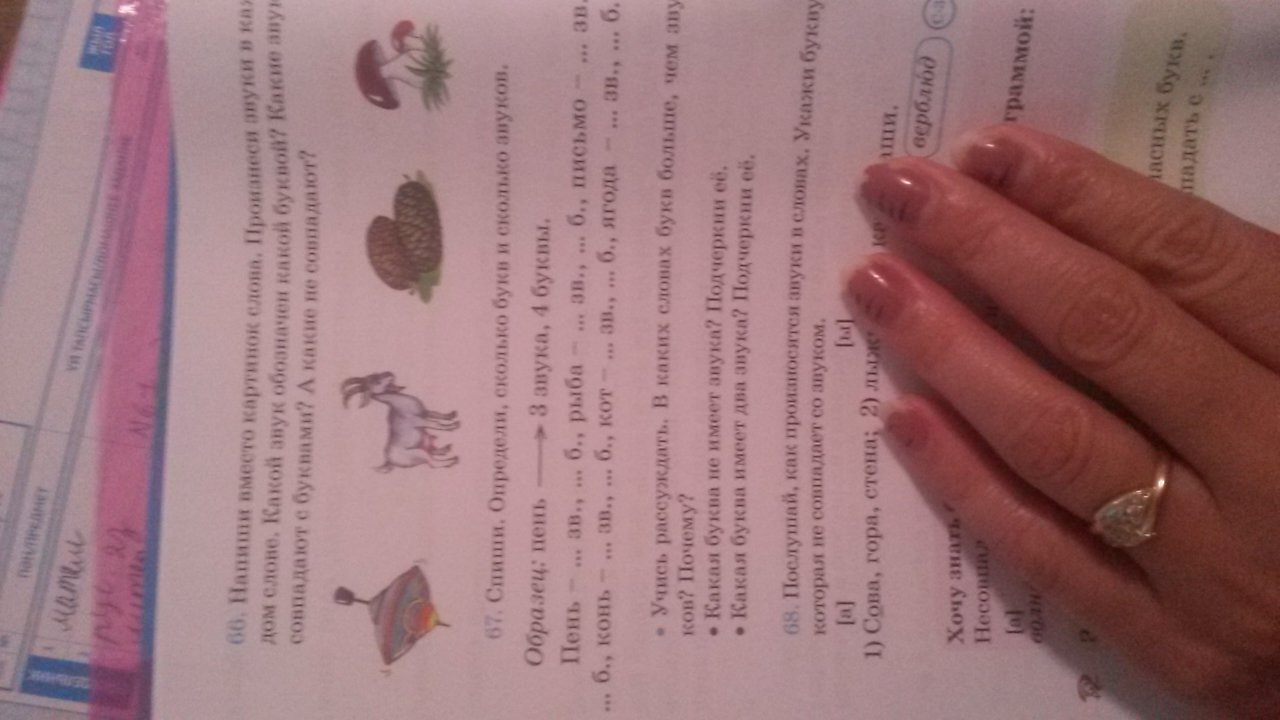Предмет: Русский язык,
автор: diash2
помогите пожалуйста упражнения 67
Приложения:

Ответы
Автор ответа:
4
пень - 3 звука,4 буквы
рыба - 4 звука, 4 буквы
письмо - 5 звуков, 6 букв
конь - 3 звука, 4 буквы
кот - 3 звука, 3 буквы
ягода - 5 звуков, 5 букв
рыба - 4 звука, 4 буквы
письмо - 5 звуков, 6 букв
конь - 3 звука, 4 буквы
кот - 3 звука, 3 буквы
ягода - 5 звуков, 5 букв
diash2:
спасибо
Похожие вопросы
Предмет: Оʻzbek tili,
автор: marypmil
Предмет: Алгебра,
автор: akmaralsharipova
Предмет: Математика,
автор: spartanets20109015
Предмет: Химия,
автор: kRyl0v4naTa
Предмет: Математика,
автор: nilimili288